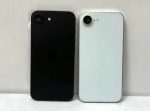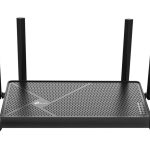Editor’s Note: This article is a reprint. It was originally published March 31, 2019.
Bob Dennis, Ph.D., a biomedical engineer by profession, is also the author of “Stroke of Luck: Master Neuroplasticity for Recovery and Growth After Stroke,” and its much-shortened version, “Stroke of Luck: NOW! Fast and Free Exercises to Immediately Begin Mastering Neuroplasticity Following a Stroke,” an excellent reference book that everyone should have in their medical library.
Why do I recommend you get a copy of Bob’s book now? Because it is highly likely you or someone you know or love will have a stroke, and you simply don’t want to wait for this book to ship to you as you will need access to it immediately if you are to minimize the damage done from the stroke.
Stroke is a massively pervasive problem in the U.S., with an estimated 795,000 strokes occurring each year.1 It’s one of the leading cause of deaths, killing an estimated 140,000 annually. It’s also a leading cause of long-term disability in the U.S.2 Strokes are also becoming more prevalent in younger people. An estimated 10% to 15% of all strokes occur in people under the age of 50.3
The impetus behind the book was Dennis’ personal experience. He’s suffered two strokes so far, the last one in July 2018, at the age of 54, and made a magnificent recovery using the techniques he lays out in his book.
An example that has ignited renewed interest in prevention is the sudden death of 52-year-old actor, Luke Perry, in 2019 from a massive stroke. Unfortunately, if it doesn’t kill you, you may suffer with severe disabilities for the remainder of your life, which is why Dennis’ book is so important.
He compiled this book as a resource to help stroke victims improve their chances of making as full a recovery as possible, and his own story is evidence that it’s possible. He recounts his experience:
“I woke up one morning in early July of 2018 and realized I’d had a stroke while I was in bed. I could barely talk, but I was able to get myself to a doctor. Of course, they loaded me immediately onto an ambulance and took me to a hospital. I was really aware of what was going on and what was happening. I paid very close attention to what they were asking me to do and what they were telling me.
The standard of care now … is that when you have a stroke, within three hours, they can give you thrombolytics — chemicals … to break up a thrombus or a clot … It … saves and preserves brain tissue without permanent death of the neurons. I was outside the three-hour thrombolytic window, so that was not an option.”
Conventional Medicine Falls Short on Stroke Recovery
For clarification, within that three-hour window, they have to determine which type of stroke you had, as giving thrombolytics to someone who has suffered a hemorrhagic stroke would be lethal (since a vein has ruptured and it’s already bleeding inside the brain).
Hence, one of the first things that must be done is magnetic resonance imaging (MRI) to determine whether your stroke is due to a blood clot (ischemic stroke) or a rupture (hemorrhagic stroke). According to the American Stroke Association, 87% of strokes are ischemic; the remainder are hemorrhagic.4
“Fortunately for me, most of my colleagues are neurophysiologists. On the very first day, my wife was able to ask them what I should be doing to get the best possible recovery. I got a lot of real expert opinions on it from my colleagues … I kept asking the mainstream physicians, ‘What should I be doing to improve my recovery?’
They kept saying, ‘Well, take your meds, which are statins … and baby aspirin. Consider trying a Mediterranean diet.’ The last thing they said was, ‘Well, you should go to physical therapy (PT) too.’ Now, I spoke to everybody who was at the hospital — a Level 1 neurotrauma stroke center — and that was the sum total of all of their advice.
I was thinking to myself, ‘Seriously, come on. This happens to 800,000 Americans a year? I know there are things you can do after stroke, where’s the good advice?’ It wasn’t forthcoming … Of course, I knew a lot more because I’m a biomedical engineer. I knew a lot more than they were telling me. I got kind of a little angry about the fact that they don’t give good advice.
They basically give you the advice, ‘Just lie there and wait,’ which, in my opinion, is the worst thing you can do. Once you know it’s not hemorrhagic, you should be doing things to promote your neuroplasticity. That’s what I did. I just started doing what I knew was right …
If I couldn’t do something, I did it over and over and over again until I could do it. I recovered from the point where I couldn’t stand, I couldn’t walk, I couldn’t talk. By the end of the first day, I was pretty much ambulatory. I could communicate with people … [in] … one day.
I’m no genius. I’m just a regular guy, but that is neuroplasticity right there happening. You can make the most of it … Right after your brain is injured, you have this brief window of immense neuroplasticity and you need to take advantage of it. I got kind of ticked off by this whole system.
I was like, ‘You know what? Somebody needs to start telling people [that] as soon as you have a stroke, make sure you start doing things, especially the things they’ve asked you to do when they’re assessing you. Because those things are safe. They’re effective. They zero in on your problem, and you can do them without any special equipment.
One of the ones they asked me to do was talk like a baby — ‘Da, da, da, da, da. Ma, ma, ma, ma, ma’ — which I couldn’t do. But you can sit on a gurney and you can go, ‘Da, da, da, da, da,’ until you can do it, right? I list all of [these strategies] in the book, because I think that they’re a really good place to start.”
Stroke Preparedness
Dennis wanted to make sure this information is available to anyone who needs it, and at a moment’s notice, so the book is primarily designed to be an e-book, and is available for free on Kindle Unlimited on Amazon. “Also, as an e-book, you can have it the day you need it, which is the day you have a stroke,” he says. “You don’t have to wait for it to be delivered.”
You don’t even need to buy the book to get the most important advice and recommendations from it. You can simply click on the preview and read the summary, placed before the table of contents. My recommendation would be to get the book and review it now, before you or someone you love has a stroke, so you’re already familiar with the material.
Dennis’ experience is a powerful demonstration of how you can rapidly regain functionality by taking full advantage of your brain’s capacity to rewire itself, a process called neuroplasticity. Basically, the brain training Dennis describes allows your brain to develop alternate pathways to bypass the damaged neurons, and the sooner you do it after the damage has been incurred, the more effective it will be.
“In the full-length version of the book, which is about 600 pages in hard copy, I talk about the mechanism of neuroplasticity at great length … It turns out neuroplasticity is something that happens every time you learn something.
You can take different kinds of supplements, drugs and just food substances, which are thought of as nootropics. Sometimes they explicitly say, ‘This promotes neuroplasticity.’ If you put in the term, neuroplasticity, just as a Google search term, there are all kinds of blogs on it.
I downloaded and I show a few of these blogs. They’re all very similar. They all amount to the following: Do novel things. Keep moving. Keep learning. Keep trying things. Keep challenging yourself. You don’t have to have a stroke to have neuroplasticity, right? It just naturally happens when your brain is working and learning new things.”
Helpful Lifestyle Interventions to Aid With Stroke
In addition to brain training exercises, Dennis also implemented a number of powerful lifestyle interventions that aided his healing. Among them, intermittent fasting, which he says radically changed his life and played an important role in his recovery. Since he started intermittent fasting after his stroke last year, he’s lost 52 pounds.
“The book is mostly about attitude and exercises for your mind and body, because your musculoskeletal system does interact with your body. But I do spend some time talking about how different things, like supplements and different technologies … can be helpful. But I’m not an expert in those, and I don’t think I’m really plowing new ground there. I just mention them …
Now, I don’t think anybody should wait to have a stroke before doing intermittent fasting … In fact, if I could wind the clock back to when I was a kid, there would be one change that I would make in my life — I would stop eating all the time. I would intermittently fast … Once you start eating once a day and you eat well, you’re just not hungry the rest of the time.”
Stroke of Luck
The title of the book, “Stroke of Luck,” refers to the concept of being an inverse paranoid, or pronoia, where you presume that when bad things happen, something good can come out of it. In Dennis’ case, that’s exactly what happened. By taking advantage of neuroplasticity, and training extra hard due to his stroke, he ended up not only recovering back to his prestroke state but actually improved beyond that.
His sense of balance improved, and he became ambidextrous. He was also able to eliminate his chronic back pain. As a biomedical engineer, Dennis invented one of the best pulsed electromagnetic field (PEMF) devices on the market called ICES model M1.
One of the reasons behind its development was his desire to create something to help with his own back pain issues. Remarkably, the stroke ended up being part of the answer. He tells the story:
“They had me on opioids, so I developed the PEMF device. It actually worked really well for my lower back pain, general aches and pains, injuries and stuff like that. But then about four or five years ago, I started developing complex regional pain syndrome (CRPS) in my pelvis and legs, which means I was just in pain all the time.
It was probably centrally mediated, which means it was probably something in my brain, because the PEMF was not helping. CRPS is a terrible condition. It’s got, on average, the highest pain scale rating of any condition. There’s virtually no treatment for it …
I threw every scrap of knowledge that I had at it and wasn’t getting better. And then when I had the stroke and came out of it the next morning, the pain was gone … It’s known that certain types of pain are because your brain is mis-wired …
If one [brain] region is damaged, you can vicariate, which means that a different area of the brain can take over that function and adopt it. A lot of people do not know this … There’s a lot about the brain that we just don’t understand. But we do understand that under the right conditions, it can rewire itself …
If you’re exercising enough areas in your brain, you get a total brain response of neuroplasticity. It is known, for example, that one area with one lesion of a stroke in your brain will actually cause neuroplasticity throughout the brain.
If you are actively encouraging neuroplasticity enough in different places in your brain, the rising tide lifts all boats. A lot of things just get better, because your brain is in the zone. It’s in the mode to rewire itself, and it does …
As far as the pain is concerned, it just vanished [after the stroke]. I woke up and it was gone … I wanted a full recovery of my brain, but I did not want the pain back. I didn’t want all of the circuits to vicariate. I only wanted the good ones to vicariate.
I think I’ve been about 90% successful because I had a little tiny bit of the pain return, but now I’m able to exercise and make that go away … In the book, I tried to make it a resource, but I boiled it down to, ‘What does the brain really do? What do we really know? If you want to exercise this kind of sensory input … motor activity or mental activity, you can do these kinds of exercises.'”
Time Is of the Essence
It’s well worth reiterating that when you’re dealing with a stroke, first, you need very rapid medical treatment. You only have a three-hour window within which medication can be administered to dissolve the clot and prevent further damage. But you also need to start your recovery program as quickly as possible — that same day, or as soon as you’re coherent enough to begin. The same applies to PT.
Dennis was told he’d have to wait three weeks for a PT appointment, which he realized was far too long. So, he developed his own PT program. “If I had just done what was prescribed and advised, I don’t think my recovery would have been very good. I certainly could not have given this interview,” he says.
As a result, by the time he saw his physical therapist, he was already able to perform 80% or 90% of the exercises prescribed. Dennis also emphasizes the need to get the most out of your prescribed PT. Many simply drop out and stop going after a couple of sessions, thinking that once they know the exercises, they can just do them at home.
“PT is only as good as what you bring to it,” he says. “When I went to PT, I had a huge list of questions. I said, ‘Can you measure this? Can you measure that?’ They put me on every machine they had. I started getting numbers, so I knew I was doing something right. I was getting better at the sensory organization testing.
Then a few weeks later, I did it again. They said, ‘Whoa. You’re improving way better than anybody in the history of doing this.’ In fact, one of the physical therapists said, ‘Your scores are higher than mine’ … Because I was exercising …
[PT is] the best part of the medical system you definitely want to engage if you have a stroke. Get the best physical therapist that you can and the best occupational therapist and the best speech therapist. I had all three …
[My] fast recovery was because of what I brought to the treatment. If you just do what they’re asking you to do, I think most people will have a pretty poor recovery. I’m going to make a statement now. I will stand by this.
Most people can and should expect a much, much better recovery than the medical system would expect or report if they simply do as much as they can, but also do [what] they cannot do and keep exercising it, and keep doing new things.”
More Information
In my view, “Stroke of Luck” should be required reading for all primary care clinicians, because they really need to understand this information — and provide it as a resource to their stroke patients, as it contains such a valuable variety of recommendations consolidated all in one place.
“What I wanted to do was collect every resource related to exercise, lifestyle, attitude and choices,” Dennis says. “There’s nothing in there that I didn’t try. I didn’t just list a bunch of junk. Even the really strange things, I’ve tried them. If it seemed to me to be stupid and hokey, it’s not in the book.”
The full-length hard copy version of the book, “Stroke of Luck: Master Neuroplasticity for Recovery and Growth After Stroke,” is just over 600 pages and retails for $24.99. It’s also available as an e-book for less than $6 (or free with Kindle Unlimited).
The shortened version, “Stroke of Luck: NOW! Fast and Free Exercises to Immediately Begin Mastering Neuroplasticity Following a Stroke — Right Now!” is only 100 pages long. It’s available in paperback for less than $20, and as an e-book for less than $6 (or free with Kindle Unlimited).
Also, remember you can get the key points in the summary completely free without download simply by opening up the Amazon preview. The shorter version contains the information Dennis believes is imperative to know on the day of your stroke. “I boiled all these things down to the essential points of which exercises you should be thinking about, safety points you should be keeping in mind,” he says. “That’s it.”






